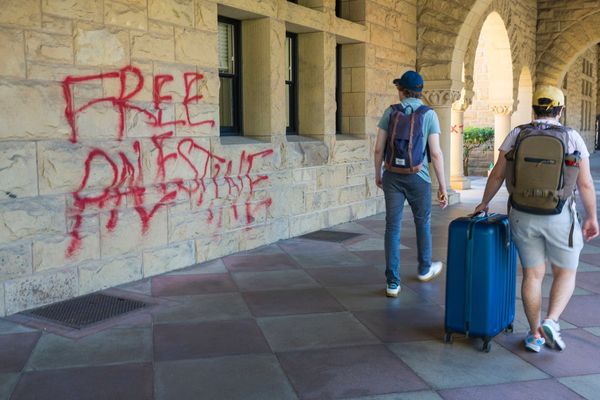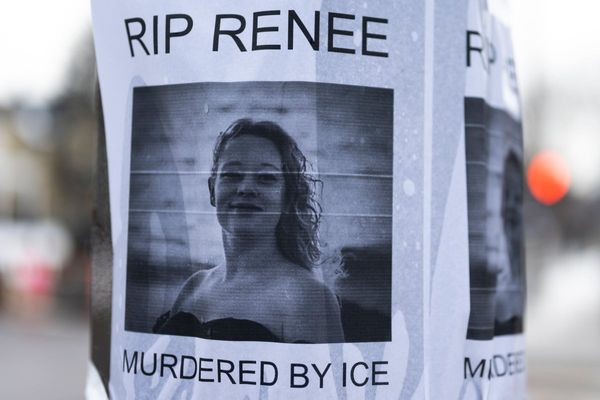KYIV, Ukraine — Russia’s flagship in the Black Sea has suffered “significant damage,” the Russian defense ministry acknowledged Thursday, as Ukraine said it attacked the vessel with a shore-to-ship missile.
The high command in the Ukrainian port of Odesa reported overnight that a Neptune missile had been launched at the ship, which has been part of the naval campaign against Ukraine’s coast. There were conflicting reports as to whether one or two missiles were fired at the ship.
Ukraine did not immediately take credit for hitting the ship, and precise details about the incident remained opaque. If confirmed, a Ukrainian strike on the Moskva would be a major blow for the Russian fleet and a tactical and public relations coup for Ukraine at a pivotal moment — when the country is bracing for a massive Russian offensive in the eastern and southern regions.
The official Russian account said a fire broke out on the Moskva, igniting ammunition on board. The statement made no mention of a missile hit on the cruiser and did not say what sparked the fire.
All crew members were successfully evacuated, the Russian defense ministry said. Russia didn’t initially mention casualties and did not detail the extent of damage on the ship.
Ukrainian officials said the Moskva, which reportedly carries an array of missiles, torpedoes, mines and other weaponry, had a crew of 510. It had previously been deployed in the Mediterranean off the coast of Syria, where Russia has aided the government of Bashar Assad against Western-backed rebels.
The Moskva was also involved in one of the signature confrontations in the early stages of the war. The ship’s crew demanded the surrender of a Ukrainian military unit posted on Snake Island, a Ukrainian island in the Black Sea. The Ukrainians are said to have answered the Russians with a defiant refusal punctuated with profanity.
Snake Island’s defenders were taken prisoner by the Russians but later released in a prisoner exchange. Their adamant refusal to give in has become a kind of motto of Ukrainian resistance, even commemorated in a postage stamp.
Elsewhere, fighting reportedly continued to rage Thursday in Mariupol, a once-thriving port city that in prewar days had a population of more than 400,000. It is now home to fewer than 100,000 residents, who lack food, water, electricity and heat, authorities say. Fleeing the area would involve a perilous run through a gantlet of shelling, gunfire and checkpoints of two rival armies.
Russia repeatedly has said the city is under its control, but Ukrainian officials say its forces continue to resist.
On a rainy, dreary morning in eastern Ukraine, an intermittent trickle of people arrived Thursday at the Kramatorsk central bus station, dragging what little luggage they could carry to a pair of buses headed west.
The pace of evacuations had spiked last week, after what was suspected to be a Russian Tochka-U missile armed with cluster bomblets struck the Kramatorsk train station, killing some 57 people and injuring more than 100 others.
Train service from Kramatorsk was suspended, but hundreds crowded into the bus station to evacuate. By Thursday morning barely a dozen more arrived to mount a tired-looking white bus run by volunteers with an “Evacuations” sign on the front.
Kramatorsk resident Oleksandr Ivanov, 38, with the Ukrainian aid group “Everything Will Be OK,” estimated that anywhere from 40,000 to 50,000 people remain in the city.
“They fall under three categories: Many don’t have money and can’t pay to stay somewhere else. Second are those whose family members are too old or too sick to move,” he said. “And perhaps a small part feel that even if Russia comes they’ll be fine.”
In recent days, Ukrainian authorities say, Russia also has relentlessly shelled Kharkiv, the country’s second-most populated city behind Kyiv. Much of the city’s population of 1.4 million has fled, and the remaining residents spend much of their time seeking refuge in an underground metro system.
Also Thursday, Russian forces again pounded cities and towns in eastern and southern Ukraine in advance of what is expected to be an all-out offensive in the country’s former industrial heartland, the eastern region known as the Donbas, which includes Mariupol. Satellite imagery and Pentagon observation have shown a growing buildup of Russian forces and heavy equipment — including helicopters and artillery — in various staging grounds.
“Russian troops are stepping up activity in the eastern and southern directions,” Ukrainian President Volodymyr Zelenskyy said Wednesday. “New columns of equipment are being brought in. They are looking for reserves.”
In the east, Russian forces are fighting alongside battle-tested Ukrainian allies who know the terrain, an advantage Russia didn’t have during its failed assault on Kyiv that resulted in an ignominious retreat earlier this month. Two pro-Russian breakaway areas of the Donbas have been at war with Ukrainian government since 2014 in a brutal conflict that has resulted in the loss of thousands of lives.
As the showdown in the east nears, Western nations have been accelerating shipment of military supplies to Ukraine.
On Wednesday, President Joe Biden unveiled an $800 million military assistance package that includes howitzer artillery guns, Switchblade “kamikaze” armed drones and Javelin anti-tank missiles.
“We cannot rest now,” Biden said, lauding the steady flow of armaments from the United States and its allies to Ukraine.
In an overnight speech, apparently before the Black Sea incident, Zelenskyy offered “deep gratitude” to Biden for the latest military aid package.
While the United States is Ukraine’s biggest supplier, the Pentagon says some 30 other nations are also providing support. The United States and its partners also trained Ukrainian troops in the years before the Russian invasion.
Russia, which has already lost considerable manpower and equipment in the seven weeks since its attack, has watched the flow of weaponry streaming into Ukraine with disquiet. Russia will view U.S. and NATO vehicles transporting weapons on Ukrainian territory as legitimate military targets, Deputy Foreign Minister Sergei Ryabkov told Russia’s TASS news agency on Wednesday.
Russia has also denounced Biden’s characterization this week of its wartime actions in Ukraine as genocide. Genocide is generally defined as deliberate effort to destroy an entire ethnic, national racial or religious group, such as Hitler’s mass murder of European Jews during World War II.
Biden’s genocide charge, said Dmitry Peskov, a Kremlin spokesman, was “hardly acceptable from a president of the United States, a country that has committed well-known crimes in recent times.”
Russian President Vladimir Putin, who launched the invasion seven weeks ago, has since accuse Washington of wanting to drag out the war in order to bleed his nation. And he asserts that U.S. efforts to bolster “democracy” in Ukraine and other former Soviet satellite states is a means to undermine Russian security.
“The United States is ready to fight with Russia until the last Ukrainian,” Putin said this week.
Moscow says the invasion, which Putin refers to as a “special military operation,” is designed to help shield Russia from Western encroachment and to demilitarize and “denazify” Ukraine. Ultra-right nationalists, some with Nazi sympathies, have been part of the Ukrainian political panorama in recent years. But they play a minor role in the nation’s political and military or leadership.
Since the Russian retreat from Kyiv earlier this month, a steady flow of foreign leaders has been visiting Kyiv. That group expanded this week to include the presidents of neighboring Poland and the three Baltic states. They were taken to see first-hand one of the capital area’s worst-damaged towns, Borodyanka, where Russian shelling and bombardment destroyed a number of high-rise apartment buildings and other structures.
“This is not war, this is terrorism,” Polish President Andrzej Duda, accompanied by Zelenskyy and the leaders of the three Baltic states, said at a news conference in Kyiv.
Russia has denied committing war crimes and says some of the scenes of atrocity have been staged to tarnish Moscow’s image.
Mariupol, on the Sea of Azov, is considered a strategic prize because it offers control of a land corridor between Russian-held territory and the Crimean peninsula, which Russia seized in 2014.
On Wednesday, Russia said it had taken prisoner 1,026 Ukrainian fighters of the 36th Marine Brigade who “laid down their arms and surrendered” in the vicinity of the Ilyich metallurgical plant in Mariupol. Their ranks included 162 officers and 47 women service members, according to a statement from Russia’s Ministry of Defense.
Of those captured, Moscow said, 151 wounded received medical care “on the spot” before being taken to a city hospital. It was the largest reported capture of Ukrainian prisoners during the war, which began with a Russian invasion on Feb. 24.
Ukrainian authorities did not respond to questions about the fate of its troops in Mariupol. But a presidential aide tweeted that units of the 36th Marine Brigade had executed a “risky maneuver” to join up with the Azov brigade, which has been in the forefront of the city’s defense despite its ultranationalist pedigree, a background that Russia repeatedly cites in its asserted aim to “denazify” Ukraine.
____
(Staff writers McDonnell reported from Kyiv and Bulos from Kramatorsk.)







